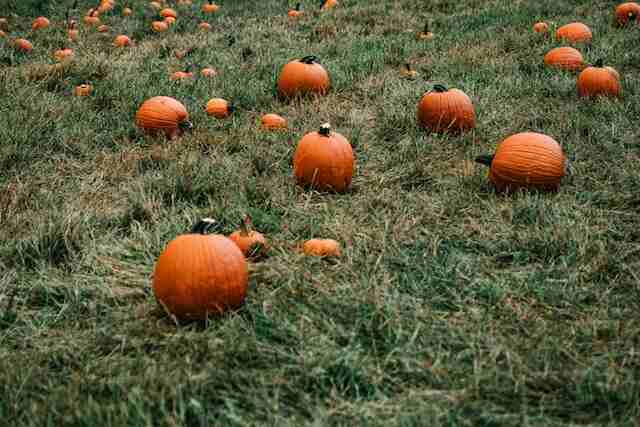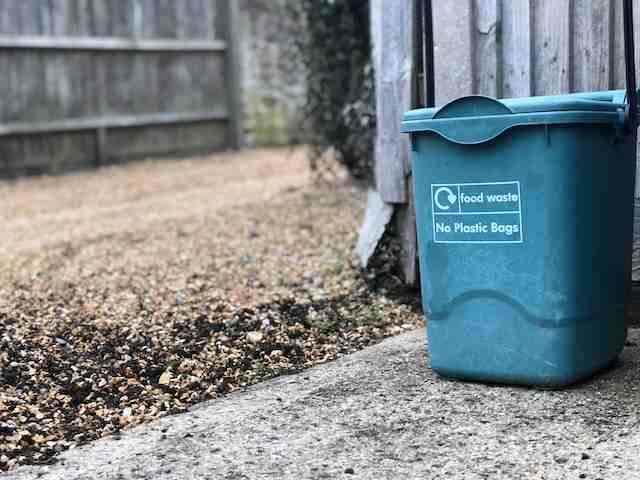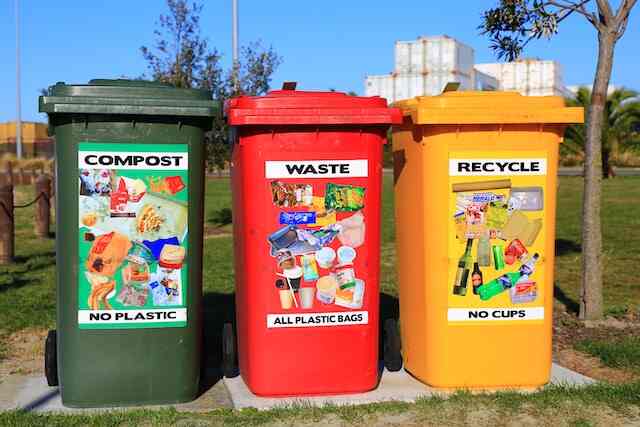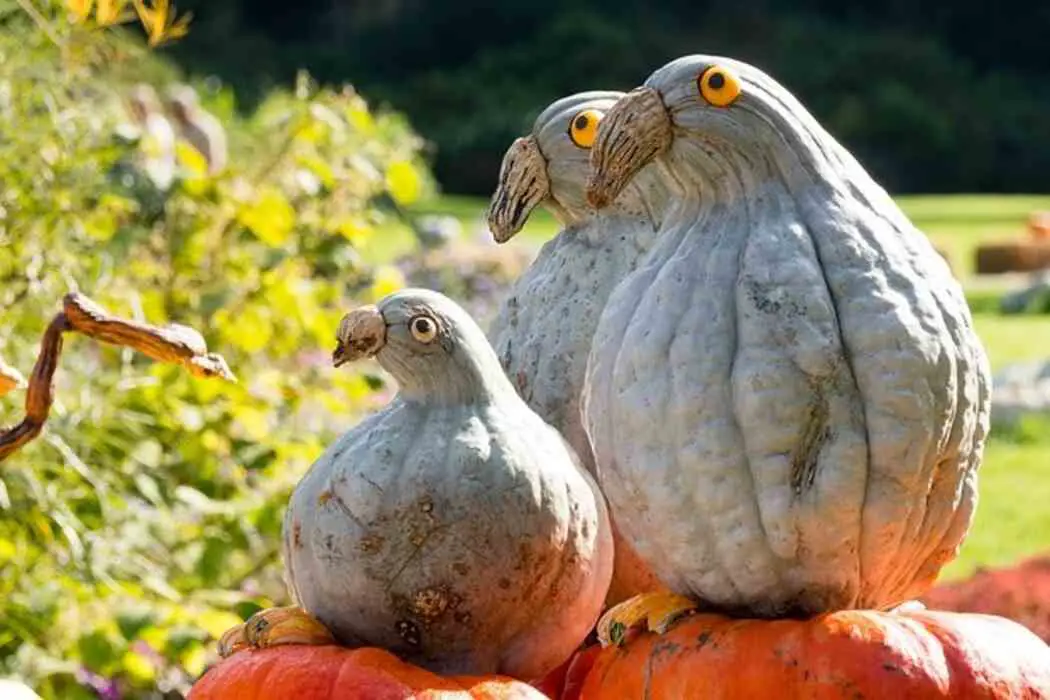Welcome to my comprehensive guide on pumpkin and candy wrapper recycling. With fall here and Halloween just around the corner, many of us will be carving pumpkins to decorate our homes and celebrating the season with treats. However, what should we do with all the candy wrappers and pumpkins once Halloween is over, especially when the jack-o’-lanterns start to rot or no longer serve their decorative purpose?
Instead of adding to landfill waste, we can recycle pumpkins and candy wrappers through composting, donation, and bird-friendly feeding.
In this guide, I will take you through each of these options, explaining the benefits of each and providing you with tips and strategies for success. By choosing these eco-friendly methods, we can ensure a more sustainable approach to pumpkin recycling and candy wrapper waste management.
Table of Contents
- 1 Key Takeaways:
- 2 Why should you recycle pumpkins?
- 3 Composting pumpkins
- 4 Donating pumpkins
- 5 Bird-friendly feeding with pumpkins
- 6 Choosing the Right Method for Disposal
- 7 Tips for successful pumpkin recycling
- 8 The environmental impact of pumpkin recycling
- 9 Spreading awareness about pumpkin recycling
- 10 Conclusion
- 11 FAQs
- 11.1 Why should I recycle pumpkins?
- 11.2 How can I compost pumpkins?
- 11.3 Where can I donate my pumpkins?
- 11.4 How can I feed pumpkins to birds?
- 11.5 Which pumpkin disposal method should I choose?
- 11.6 What are some tips for successful pumpkin recycling?
- 11.7 What is the environmental impact of pumpkin recycling?
- 11.8 How can I spread awareness about pumpkin recycling?
- 12 Author
Key Takeaways:
- Composting, donation, and bird-friendly feeding are effective options for sustainable pumpkin disposal.
- Recycling pumpkins can reduce landfill waste, promote healthy soil, and minimize greenhouse gas emissions.
- Composting requires following necessary steps and tips to achieve successful decomposition.
- Donating pumpkins supports local communities, feeds those in need, and promotes a circular economy.
- Bird-friendly feeding provides valuable food sources for birds and contributes to their overall well-being.

Why should you recycle pumpkins?
Recycling pumpkins is an essential component of sustainable pumpkin waste management. Pumpkins are organic materials that can break down naturally, which adds valuable nutrients to the soil. By recycling pumpkins, we can reduce landfill waste, promote healthy soil, and minimize greenhouse gas emissions.
In the US alone, over 1 billion pounds of pumpkins are produced annually. Unfortunately, most of them end up in landfills, where they contribute to methane emissions and harmful environmental impacts. Recycling pumpkins is a simple yet effective way to combat this problem and promote a more sustainable waste management system.
Moreover, composting, donating, and feeding pumpkins to birds are great ways to recycle pumpkins and achieve optimal environmental benefits. By choosing one of these recycling methods, we can help create a circular system where organic materials are reused and repurposed, leading to a greener and more sustainable future.
Composting pumpkins
Composting is an effective method for recycling pumpkins that allows you to divert organic waste from landfills and produce nutrient-rich compost for your garden or plants. Composting pumpkins is relatively easy, but you need to follow a few necessary steps to ensure successful decomposition.
Gather your materials
The first step in composting pumpkins is to gather your materials. You will need a compost bin or a designated composting area, such as a pile or a pit. You will also need a mix of green and brown materials, such as leaves, twigs, grass clippings, and shredded newspaper.
Cut and prepare your pumpkins
Before adding your pumpkins to the compost bin, it’s essential to cut them into smaller pieces to speed up the decomposition process. You can use a knife or a pair of scissors to cut your pumpkins into pieces small enough to fit easily in your compost bin. Remove any seeds or decorations that may not decompose as quickly as the rest of the pumpkin.
Layer your materials
The next step is to layer your composting materials. Start with a layer of brown materials, followed by a layer of green materials, and then a layer of chopped pumpkin. Continue layering until you have used all your materials, making sure to top off the pile with a layer of brown materials.
Water and turn your compost pile
Water your pile thoroughly, ensuring that it is moist but not saturated. Turn your compost pile regularly, at least once a week, to aerate and mix the materials. This will help speed up the decomposition process, prevent unpleasant odors, and produce uniform compost.
Monitor your compost pile
Monitor your compost pile regularly to ensure that it is decomposing correctly. Check the temperature and moisture level, and adjust as needed. Your compost should be ready in three to six months, depending on the environmental conditions and the size of your compost pile.
With these easy steps, you can successfully recycle your pumpkins through composting and contribute to a more sustainable waste management system.
Donating pumpkins
Donating pumpkins to local organizations or programs is a fantastic option for responsible pumpkin disposal.
There are various programs that accept pumpkin donations, and some even have specific events around Halloween or Thanksgiving where they collect pumpkins from the community.
One popular option is to donate pumpkins to local farms, which can use them as feed for livestock. You can also reach out to food banks or soup kitchens in your area, which may accept pumpkin donations to provide meals for those in need.
Tip: Before donating your pumpkins, be sure to check with the organization or program to see if they have any specific guidelines for donation. Some may prefer that the pumpkins are not carved, while others may only accept certain sizes.
Donating pumpkins to wildlife rehabilitation centers
In addition to donating to local farms and food banks, you can also consider donating pumpkins to wildlife rehabilitation centers.
Note: Always check with the wildlife rehabilitation center beforehand to see if they accept pumpkin donations and if there are any specific guidelines to follow.
| Pros | Cons |
|---|---|
| Pumpkins can be used to feed livestock and wildlife, reducing food waste and promoting sustainability. | Not all organizations or programs accept pumpkin donations, so it may take some research to find a suitable option. |
| Donating pumpkins to food banks or soup kitchens can help feed those in need in your community. | If pumpkins are not properly stored or transported, they may spoil quickly, making them unsuitable for donation. |
| Pumpkin donations can support local farms and promote a circular economy. | Carved or decorated pumpkins may not be accepted by some organizations or programs. |

Bird-friendly feeding with pumpkins
Feeding pumpkins to birds is an excellent way to recycle and provide a food source for our feathered friends. Birds often have a challenging time finding food during the winter months, and pumpkins can help sustain their energy levels and overall well-being.
To prepare pumpkins for bird feeding, it’s essential to remove any candles, decorations, or wax. Cut the pumpkin in half, scoop out the seeds and stringy pulp, and slice it into manageable pieces. Place the pumpkin pieces in a safe, flat location, away from predators and other wildlife.
Many bird species enjoy pumpkins, including sparrows, finches, blue jays, and woodpeckers. You may also attract other wildlife, such as squirrels and raccoons, but placing the pumpkin on a raised surface can help avoid this situation.
Remember to monitor the pumpkins for any signs of spoilage, and remove them promptly to avoid attracting unwanted wildlife or pests. Feeding pumpkins to birds is an eco-friendly and enjoyable way to add some activity to your backyard and support your local wildlife.
Choosing the Right Method for Disposal
Now that we’ve explored the various pumpkin recycling options, it’s important to determine which one is best for you. Each method has its own advantages and limitations, so consider the following factors when making your decision:
| Method | Pros | Cons |
|---|---|---|
| Composting | Produces nutrient-rich compost for gardening. Reduces landfill waste and methane emissions. Easy and cost-effective | Requires space and time. May attract pests if not done properly. Not suitable for all households or urban areas |
| Donation | Supports local organizations and communities. Reduces food waste and benefits those in need. Easy and free | May require some time and effort to research and find donation centers. Not all organizations accept pumpkin donations. May have limited impact on waste reduction |
| Bird-friendly Feeding | Supports local wildlife and biodiversity. Provides a food source for birds during the winter months. Requires minimal effort and cost | May attract unwanted pests or rodents. Not suitable for all households or urban areas. May have limited impact on waste reduction |
Consider which method aligns with your values and lifestyle. If you have a garden and enjoy composting, then this may be the best option for you. If you want to support local communities, then donating pumpkins may be the way to go. However, if you’re looking to promote wildlife conservation and biodiversity, then bird-friendly feeding could be a great choice. Ultimately, it’s up to you to decide which method suits your needs best.
Tips for successful pumpkin recycling
Recycling pumpkins through composting, donation, or bird-friendly feeding can be a rewarding experience. Here are some tips to ensure that your pumpkin recycling efforts are successful:
Composting pumpkins
- Cut the pumpkin into small pieces to accelerate the decomposition process.
- Add other organic materials, such as leaves or grass clippings, to the compost pile to improve the nutrient balance.
- Keep the compost moist but not too wet to prevent bad odors and the growth of mold or bacteria.
- Aerate the compost regularly to promote oxygen flow, crucial for microbial activity.
- Use a compost thermometer to monitor the temperature and ensure that it stays within the range of 120-160°F for optimal decomposition.
Donating pumpkins
- Choose pumpkins that are free of rot, mold, or other signs of damage.
- Check with local organizations, such as food banks or animal shelters, to see if they accept pumpkin donations.
- Contact community centers, schools, or churches that may host pumpkin-related events, such as carving contests or fall festivals.
- Consider organizing a neighborhood or workplace pumpkin drive to collect and donate pumpkins on a larger scale.
Bird-friendly feeding with pumpkins
- Remove any candles, wax, or decorations from the pumpkin before placing it outside.
- Cut the pumpkin into halves or quarters to make it easier for birds to access the flesh.
- Place the pumpkin on a raised platform or directly on the ground, away from predators.
- Rotate the pumpkin periodically to expose different areas of flesh to the birds.
- Clean up any remaining pumpkin after a few days to prevent mold or bacteria growth.
Following these tips can help ensure that your pumpkin recycling efforts are successful and effective. Remember that every small step counts towards a more sustainable future!

The environmental impact of pumpkin recycling
Choosing to recycle your pumpkin through composting, donation, or bird-friendly feeding can have a positive environmental impact. By keeping organic materials out of landfills, you can help reduce greenhouse gas emissions that contribute to climate change. Organic waste in landfills also produces methane, a potent greenhouse gas that is harmful to the environment. Composting pumpkins helps to divert waste from landfills and instead create nutrient-rich compost that can enrich soil and promote plant growth.
Donating pumpkins to local organizations can reduce food waste and provide valuable resources to those in need. When pumpkins are left to decompose in a landfill, they create methane gas and contribute to an increase in greenhouse gas emissions. By donating and diverting food waste, we can reduce the amount of organic waste that goes to landfills and minimize the environmental impact.
Feeding pumpkins to birds is yet another way to recycle and repurpose these festive gourds. By offering pumpkins to birds, you not only provide them with a healthy food source but also help them conserve energy during the winter months. Plus, attracting birds to your backyard can create a more vibrant, diverse ecosystem and promote overall environmental health.
Overall, pumpkin recycling is an effective way to minimize waste, reduce greenhouse gas emissions, and promote a more sustainable approach to waste management. By choosing to recycle your pumpkins, you can help make a positive impact on the environment and support a greener future.
Spreading awareness about pumpkin recycling
As I’ve explained in this guide, pumpkin recycling is a simple yet effective way to reduce waste, promote sustainability, and support local communities. However, to maximize its impact, we need to spread awareness and encourage more people to participate in pumpkin recycling.
Here are some practical ways you can help raise awareness:
- Share this article on social media and tag your friends and family members who might be interested in pumpkin recycling.
- Organize a local pumpkin recycling event in your community, partnering with composting facilities, food banks, or birdwatching organizations.
- Create infographics or posters that explain the benefits of pumpkin recycling and distribute them at local farmers’ markets, schools, or community centers.
- Reach out to local media outlets or bloggers and pitch your idea for a story or guest post about pumpkin recycling.
- Lead by example and show others how easy and rewarding it is to recycle pumpkins. By composting, donating, or feeding your pumpkins to birds, you can inspire others to do the same.
We all have a role to play in promoting sustainability and reducing waste. By spreading awareness about pumpkin recycling, we can make a significant impact on our environment and create a brighter, more sustainable future.
Conclusion
In culmination, pumpkin recycling is an excellent opportunity to contribute to sustainable pumpkin disposal and an eco-friendly waste management system. By exploring composting, donation, and bird-friendly feeding methods, you can ensure your pumpkins’ responsible disposal while simultaneously providing benefits to the environment and the community.
In choosing the appropriate disposal method, it is essential to weigh the pros and cons of each method. Be sure to follow the practical tips outlined in this guide for successful pumpkin preparation, storage, and recycling.
Furthermore, recycling pumpkins has a positive impact on the environment by reducing landfill waste, conserving resources, and promoting a more sustainable waste management system. By spreading awareness about pumpkin recycling practices, we can inspire others to adopt more eco-friendly practices.
In conclusion, we can turn pumpkins into valuable resources and contribute to a greener future by embracing responsible pumpkin recycling through composting, donation, and bird-friendly feeding. Let’s do our part and make a positive impact on the environment and the community through sustainable pumpkin waste management.

FAQs
Why should I recycle pumpkins?
Recycling pumpkins helps reduce landfill waste, promote healthy soil, and minimize greenhouse gas emissions.
How can I compost pumpkins?
To compost pumpkins, you can chop them into smaller pieces, remove any non-organic materials, and add them to your compost pile or bin. Make sure to turn the compost regularly to aid in decomposition.
Where can I donate my pumpkins?
There are various organizations and programs that accept pumpkins as donations, such as local food banks, farms, or animal sanctuaries. Contact your local community or check online directories for donation options.
How can I feed pumpkins to birds?
To provide bird-friendly feeding with pumpkins, carve out a shallow cavity in the pumpkin and place it in a safe location, such as your backyard or a bird feeder. Birds will enjoy pecking at the pumpkin flesh for nourishment.
Which pumpkin disposal method should I choose?
The choice of method depends on your personal preferences and circumstances. Composting is suitable for those with a garden or plants, donation helps support local communities, and bird-friendly feeding attracts birds to your outdoor space.
What are some tips for successful pumpkin recycling?
Ensure your pumpkins are free of any non-organic materials before recycling. Store pumpkins in a cool, dry place to prevent them from rotting too quickly. Follow specific guidelines for each recycling option to maximize your success.
What is the environmental impact of pumpkin recycling?
Pumpkin recycling through composting, donation, and bird-friendly feeding reduces landfill waste, conserves resources, and contributes to a more sustainable waste management system.
How can I spread awareness about pumpkin recycling?
You can share information about pumpkin recycling on social media, organize community events or workshops, or collaborate with local organizations and schools to raise awareness and encourage others to adopt sustainable waste management practices.



